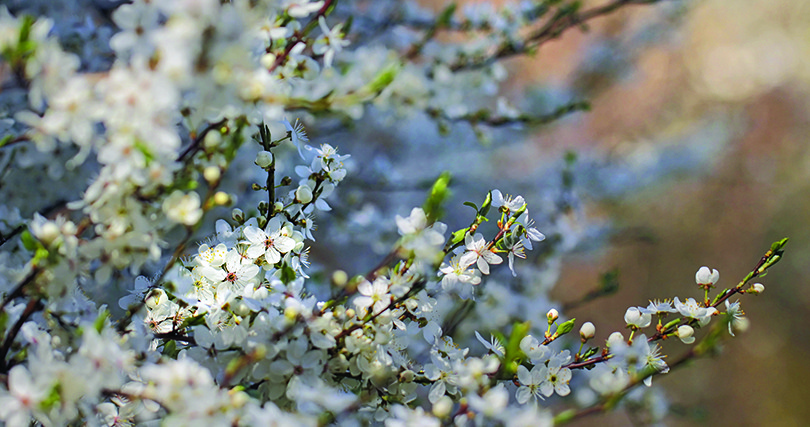By Kristen Hannum –
There’s something ancient involved in our love of trees, something so comforting and beloved about their profile against the sky and their sheltering branches. Call me a tree hugger, but I don’t think the human instinct to love trees can be denied. Festoon their branches with spring’s flowers and it’s almost too much for my winter weary heart to bear.
On the East Coast, cherry trees announce spring’s beginning, but here in Colorado we have glorious crab apples, with their clouds of pink blossoms that drift down like enormous pink snowflakes in our stiff spring breezes.
“I don’t think you can beat the color,” says Dan Komlo, partner and landscape manager at Bookcliff Gardens, a garden center and landscape service in Grand Junction.
Crab apples are a great choice for Colorado gardeners, especially crab apples that bear persistent fruit, which means there’s less mess.
It does depend on the site, but Komlo also favors bur oaks, hawthorns and locusts as good choices for deciduous trees. Sadly, he advises homeowners may want to stay away from ash trees because of the despicable, invasive emerald ash borer, first reported in Colorado in September 2013.
What makes a place right for a tree has to do with both design and environment. “We’re always trying to mate the proper tree to the proper location,” Komlo says. “And we’re always concerned about water issues with trees, particularly when they’re young.”
That doesn’t mean that you can’t have a tree if you Xeriscape. Drip irrigation and tender care gives a little tree a good start and then its roots will tap down or out and, as Komlo puts it, they’ll outgrow the usefulness of that irrigation system. Then they’ll find water on their own except during spells of drought or especially dry winters.
It’s always preferable to plant native species, which gives Colorado gardeners a plethora of evergreen trees: white and corkbark firs; Engelmann and Colorado spruces; lodgepole, limber, ponderosa, southwestern white, pinyon and bristlecone pines; Douglas firs; and all those various junipers.
There are fewer deciduous trees to choose from if you want to go native. Canyon maples, which thrive up to about 7,500 feet and are also known as Wasatch or bigtooth maple, are native, as are thinleaf alders and Rocky Mountain birch.
And then there are the cottonwoods. Cottonwoods define the West, yet people love to hate them. Me? You can count me as a cottonwood lover, not a hater. Cottonwoods harbor an astonishing variety of songbirds and other wildlife. A few years back, we walked nearly every day to watch a nest full of great horned owls in a majestic cottonwood near the High Line Canal in Arapahoe County. Call me crazy, but I even love the magical snowy fluff cottonwoods produce for a couple weeks in late spring.
The Chinese say that the best time to plant a tree is 20 years ago. The next best time is now. As the folks at the Arbor Day Foundation say, planting a tree is an act of optimism and a gift to the future.

